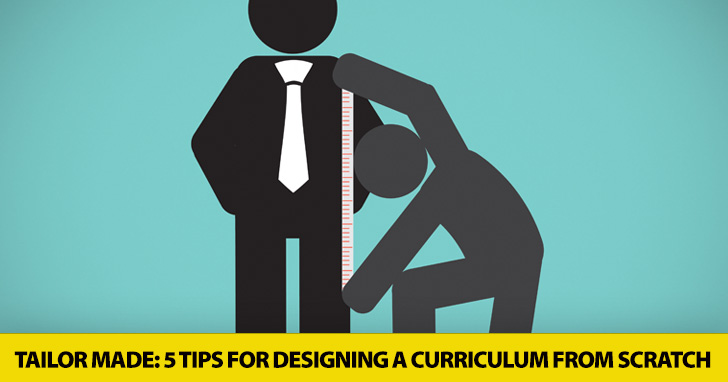Tailor Made: 5 Tips for Designing a Curriculum from Scratch


Not by a long shot. Even classes who have the same title and the same supposed skill level can be as different as night and day. So why is it that we think we can or should teach the exact same material to classes as diverse Abnigation and Dauntless? The best teachers tailor the material they teach to the unique temperament, personality, and interests of their class while still covering the required material for that course. If you are looking for ideas on how to zero in on what your class likes (and needs) and how to incorporate that information into your lesson plans, here are some ideas to get you started.

It’s true that most language students will learn better when their whole bodies are involved, but that doesn’t mean every class likes it. Some classes are naturally energetic. Younger students want to move and get their whole bodies going as they learn. And while some older students have just as much energy as their younger counter parts, for the most part they have less energy, less desperation for action than younger students. Still, you want them to benefit from getting their bodies involved in language learning. So to tailor your activities for this class, try keeping the movement confined to things students can do at their desks. You might have them hold up objects or signs or stand at their desks and perform certain movements. You should probably avoid activities that involve running from one place to another or those that have students act out silly scenarios, like charades. If you try to keep your target at the desk movement, you can still have your students moving without making them too uncomfortable with what you are asking of them. And if your class is the energetic type, no matter what their age, get them moving as much as possible both inside the class and out.
Some of you teach young students while others just teach students who are young at heart. Either way, you may have a class that likes to be silly, free form, or playful. Other classes are more serious. Their studies are very important to them, and they think fun and games are something best left outside the classroom. If you are teaching a class such as the latter, keep your activities close to those suggested in your text books. Do most of the instruction yourself with fewer times when your students present information. But if you teach a sillier class, think about including more entertaining activities in your language instruction. Try playing games with your students, games that also target certain language concepts. You can find hundreds of game ideas right here on Busy Teacher. You might also ask your students to perform skits, act out things they have read, or do improvisation. All of these activities will appeal to your more adventurous students.
Some students are more introverted than others, and some ELS classes are, too. Since language is by nature social, your students will still need to talk with one another, but you can still keep the comfort zone of your more introverted class in mind when you assign tasks. Have students text or pass notes rather than chat about a topic you are covering in class. Put students in larger groups where shyer students don’t have to say as much as they would in a group of two or have students work one on one. Don’t give up on oral language, but keep it to quieter, less dramatic situations. And if your class is a social one, well, that makes teaching that much easier for you. Let them discuss whatever topic you are teaching, argue, debate, and use spoken language in any way they seem inclined to at the time.
Some class learn quickly. Other classes learn more slowly. If you are looking to tailor your class content to either a faster or slower learning class, try these ideas. Make a list of websites where more advanced classes can do additional work during free learning periods. Set up learning stations around your classroom that ask students to apply the language skills they are studying in practical ways. Challenge students to make up their own exercises to practice language concepts and have groups exchange their tasks and then complete them. Give your students authentic English material (realia) rather than those designed for ESL students. Bring guest speakers into class whenever possible so students get the chance to listen to and speak with native English speakers. For slower learning classes, make sure all the information you give your class is available in written form so students can go back and read what you taught in class each day. Use materials designed for ESL students and classes, and periodically review what you have taught in class so it is always fresh in your students’ minds. Either way you will make it through the material you need to, but you can adjust the speed at which you cover it and the depth to which you explore any given topic.
If your ESL classes are anything like mine, at least ninety percent of your students are studying English for either academic or business purposes. If your class contains a majority of one or the other, you can tailor your assignments and activities to that language goal. When you give students reading passages, take them from text books or business magazines. If you watch videos in class, try using collegiate lectures or business presentations. Teach practical skills like registering for classes or booking flights for a business trip. Choose your writing assignments based on what students will be writing once they have completed their English program: college essays, interdepartmental memos, or product presentations. You can find tons of resources on business English on Busy Teacher, and for academic students just think of what you had to do for your own education.
If you make small changes to what you do in class, you may see big rewards when it comes to your students’ experience in class. Try one or more ideas for tailoring material with this year’s class and see if it doesn’t make a difference in how much your students like what you teach.